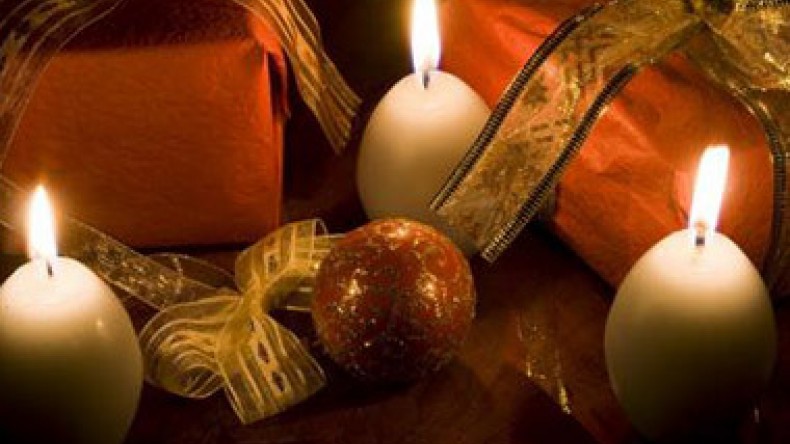
Rendahl: A Year of Light
By Kristi Rendahl, from The Armenian Weekly
For the past month I’ve been reading and re-reading parts of the journals my great-grandmother wrote and had published in the Benson County Farmers Press in the early 1950s. She was born in 1874—a mere 101 years before I came to be.
Her writings bring life to her childhood in Norway, the voyage to America, burning “buffalo chips” for fuel during the pioneer days in North Dakota, the influenza epidemic of 1918, and learning about poison ivy the hard way. Even in her second language, she crafts phrases from words like a spinner spins yarn from wool, and maybe she did that, too.
Of Christmas she wrote:
Candles were always a part of the festivity of Christmas. We used candles a great deal. There was a hanging oil lamp in the parlor, but otherwise we used candles. Every year, just before Christmas, after the butchering was finished and the lard and tallow rendered, we made a supply of candles for the year.
We had a couple of sheep mangers that were light and easy to move around, so we would take one of them into the house when we made candles. The wicks were measured out to the right length and tied to sticks that were long enough to reach across the manger, about five wicks on each stick. When we were ready to start dipping the wicks, the warm tallow was placed nearby, so we could reach without standing up. Dad was the chief of this candle-dipping activity and Mother kept filling the pots with hot tallow. The children were permitted to make small candles.
When all the wicks were dipped once and were cool enough they were dipped again to take on another coat, and so on, until they were full sized. It was steady work for a whole evening; then, we had candles for a whole year.
Yes, we had Christmas trees in Norway, too. Dad and the boys worked in the woods most of the time during the winter and shortly before Christmas they brought a well-shaped tree that they may have selected weeks before. We placed the Christmas tree in the center of the floor, directly under the hanging lamp in the living room. The room was large enough that there was plenty of room to walk around the tree.
We didn’t have any packages under it. Our presents were always something to wear—whatever we needed the most, I suppose. We were not really so excited about the presents; we were probably wearing them already. It was walking around the Christmas tree, singing the Christmas songs, and eating rice in the big bowls with butter, sugar and cinnamon that represented the spirit of Christmas.
What strikes me about these passages is not the absence of materialism and unrelenting greed that are at the heart of most messages we receive about Christmas today—both the ones generated by those who reap the profits and the ones perpetuated by us.
What moves me is the focus on light, on ritual, and on renewal.
That a family, whether by birth or chosen, would come together to make its own light for a year is to me a powerful metaphor. That all members of the family, even the smallest, are contributors to creating that light is empowerment in its purest form. And that a young child carries that memory for decades and shares it in her 70s—having descended the mountains and crossed the sea and survived the harshest of winters in claim shacks—is evidence that to make light in the world is both a responsibility and a privilege.
I read these excerpts aloud at the dinner table this past Christmas Eve while family members heaped rice pudding on their plates, asked each other to pass the butter before the pudding cooled, and sprinkled it with sugar and cinnamon, while three candles flickered on the table. After scrambling to define tallow and render for my niece and nephew (and maybe for the grown-ups, too), we continued with the long-time tradition of Christmas Eve risgrøt, modified only through the use of an imported vanilla bean and lactose-free skim milk (traditions remain the same, but diets and food intolerances, it turns out, do not).
As children, my brother and I cut down a Christmas tree each year on the farm. Dad always had one in mind when he announced that it was time to bring in a tree, not unlike our forbears in the mountains of an island in Norway. He carried the handsaw, but we lay in the snow to cut it down. Our tree decoration skills were not on par with anything you’d see in a magazine these days, but the tinsel was distributed in a manner I’ll describe as festive, if without rhyme or reason. And I honestly can’t remember one present besides a plastic red sled that had been carefully wrapped in a black garbage bag.
Each day is an opportunity to begin anew, but Christmas is a special one. It is at once about birth and celebration, humility and generosity, light and love. We live in a world that is very dark at times, too dark for my comfort and maybe for yours, but we have an exceptional opportunity to come together with family, friends, and even in our own minds, to create a light of gratitude that will sustain us and those around us for the months ahead. Indeed we can. Indeed we must.
Newsfeed
Videos






























